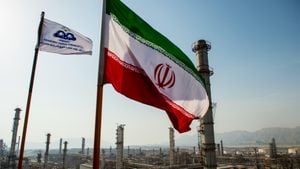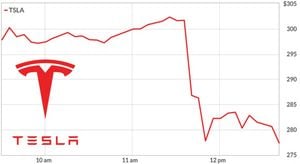Over the past year, college campuses across the United States have transformed, becoming mountaintops of heated debate and impassioned protests against the backdrop of the Israel-Hamas conflict. With each new chapter of the conflict, students have taken to the streets—and campus lawns—to express their perspectives on the war, often leading to clashes of ideals and values.
One of the more notable instances occurred at Harvard University, where approximately 25 faculty members found themselves barred from their campus library for two weeks after initiating what they termed a "silent study-in". This demonstration was aimed at protesting the university’s decision to suspend student activists who earlier conducted similar acts. The professors gathered at Widener Library with placards reading slogans like "embrace diverse perspectives," which were inspired by the library's own values.
One faculty member, Professor Ryan Enos, took to social media, sharing the boundary placed on him, which prompted widespread discussion about how universities handle dissenting voices. This action from the administration has been characterized as unprecedented within Harvard's storied history. Martha Whitehead, head of the Harvard Library system, articulated her stance, saying the library was not meant to serve as the backdrop for any group protest, arguing such activities divert attention from the intended purpose of the space and can disrupt library patrons.
But Harvard is not alone. Other institutions have seen similar rallying cries from students advocating for Palestinian rights. Encampments formed on various campuses have sprouted as students demand university divestment from companies perceived to benefit from Israeli occupation. For example, at New York University, law enforcement intervened during encampments near the business school, resulting in over 100 arrests, and incidents of pepper spray being deployed against peaceful protesters, including some who were praying.
The situation echoed at Yale University, where police arrested dozens and tensions escalated as protest organizers sought to amplify their voices through encampments. After police raided, the community, including professors, actively sought to protect students engaged in democratic expressions. One such student expressed feeling "limbo” and uncertainty about their university housing, following their involvement in the protests.
Columbia University too became engulfed in the fray, with students facing suspension and police involvement amid mounting protests. The administration drew lines not just for safety but as preemptive moves against disruptions, which onlookers criticized as censorship. This struck chords with faculty as well, some of whom staged their own protests against the actions taken against students, emphasizing the need for institutional respect for the rule of law and academic freedom.
At the same time, Columbia faced critiques from individuals like Shai Davidai, who attributed motives of terror to student organizations. Davidai's commentary lifted eyebrows, and his own attempts to hold counter-protests were halted, reflecting the increasingly charged atmosphere on campus. His efforts to speak out against what he termed antisemitism have placed him at the crossroads of discourse—polarizing among student groups and among faculty.
Similar events unfolded at UCLA, where dueling lawsuits reflect the stark divisions on campus. One lawsuit from the ACLU argues the university unlawfully suppressed antiwar voices, stifling free speech, whereas another alleges systemic issues with antisemitism during anti-Palestinian protests. Both cases highlight the university's challenge of balancing free expression with maintaining safety, illustrating how discourse around the conflict invites deep fissures within the student body.
The campus climate, especially during semester transitions, often devolved to the point of safety concern with police needing to contain student groups taking to the streets. Verbal clashes turned violent at times, and some students reported feeling under duress simply for attending educational institutions. Faculty and administration have faced scrutiny for their approaches, as many critics argue they are failing to adequately protect students from acts of hate or violence, thereby necessitating national conversations about the need for safe spaces for all students.
Reports surrounding these events have suggested the White House is aware of the sentiments flaring on campus, juxtaposing President Biden’s strong denunciation of antisemitism against the rising tide of student activism. While the president criticized rising calls for violence against Jews, many student organizations push back, arguing for inclusivity and condemning any form of oppressive behavior, particularly against those advocating for Palestinian rights.
Each episode emboldens student groups on campus to raise their voices even louder. The situation gravitates to questions of civil rights and liberties amid fervent expressions of identity politics. The tensions reveal the necessary growing pains as universities navigate this complex terrain—keeping everyone safe, whilst allowing spirited debate, remains the challenge of the hour.
The conversations surrounding the protests echo far beyond campus grounds, capturing the attention of donors and alumni, some of whom have threatened to withdraw support, embroiling institutions like Harvard and Columbia even more deeply within broader societal discourse on the Israel-Palestine conflict. This rollercoaster of activism shows no signs of slowing down as students and faculty alike continue to forge connections nationally, demanding accountability both from their universities and from each other, ensuring their voices are heard loud and clear.
With questions of freedom of speech, representation, and safety intertwining within each protest, the coming months promise to be packed with both heightened tensions and passionate dialogues at these academic institutions. For students caught at the center of it, as well as for the university leaders grappling with these crises, reflecting upon the core values of university life—responsibility, respect, and freedom—will be the crux of moving forward. While these conversations may be uncomfortable, they are undeniably necessary as the nation contemplates the path of college activism and its intersection with global events.



